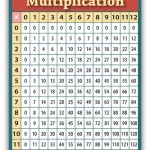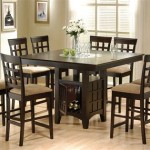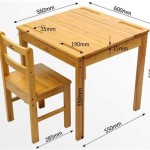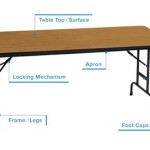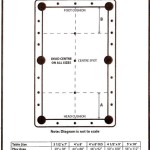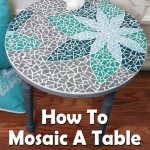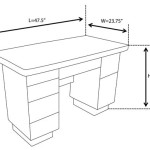Mid-Century Modern Round Glass Coffee Table: A Timeless Design Icon
The mid-century modern round glass coffee table embodies the design ethos of the mid-20th century: a harmonious blend of functionality, simplicity, and elegance. This furniture piece transcends mere practicality to become a statement of style, contributing significantly to the aesthetic appeal of any living space. Its enduring popularity stems from its ability to seamlessly integrate into diverse interior design schemes while maintaining a distinctive character.
Characterized by clean lines, organic shapes, and a focus on natural materials, mid-century modern design philosophy sought to create furniture that was both aesthetically pleasing and conducive to comfortable living. The round glass coffee table perfectly encapsulates these principles. The glass top offers a sleek, unimpeded view of the base, often crafted from wood, metal, or a combination of both, showcasing the craftsmanship and design ingenuity of the era. The round shape eliminates sharp corners, promoting a sense of flow and openness in the room.
Understanding the key characteristics of a mid-century modern round glass coffee table is crucial for appreciating its design significance and selecting the right piece for a particular space. This article will explore the defining features of this iconic furniture item, its versatility in interior design, and the considerations to keep in mind when choosing and maintaining one.
Key Design Elements of Mid-Century Modern Round Glass Coffee Tables
Several distinctive design elements contribute to the unique appeal of the mid-century modern round glass coffee table. These elements are not merely aesthetic choices but are deeply rooted in the design principles of the era.
Material Composition: The combination of glass and other materials is a defining characteristic. The glass top, typically tempered for durability and safety, offers a transparent surface that allows light to pass through, creating an airy and spacious feel. The base, constructed from materials such as solid wood (often teak, walnut, or birch), metal (frequently hairpin legs made of steel or brass), or a combination of both, provides structural support and contributes to the overall aesthetic. The juxtaposition of the smooth, transparent glass with the warmth and texture of wood or the sleekness of metal creates a visually compelling contrast.
Shape and Form: The round shape is fundamental to the design. Its circular form softens the angularity of a room and promotes a sense of conversation and connection. Unlike rectangular or square coffee tables, a round table avoids sharp corners, making it a safer option, especially in homes with children. The round form also contributes to a more fluid and organic feel, aligning with the mid-century modern emphasis on natural forms.
Leg Design: The legs of a mid-century modern round glass coffee table are often slender and tapered, contributing to the overall sense of lightness and elegance. Hairpin legs, made from thin metal rods, are a particularly iconic feature, providing a minimalist and visually striking support system. Wooden legs are typically tapered and angled outward, further enhancing the sleek and streamlined appearance. The leg design is not merely functional; it is an integral part of the overall aesthetic, contributing to the table's distinctive character.
Minimalism and Functionality: True to the mid-century modern ethos, these coffee tables prioritize functionality and simplicity. Ornamentation is kept to a minimum, with the focus on clean lines and elegant proportions. The table serves its primary purpose – providing a surface for placing drinks, books, or decorative items – without unnecessary embellishments. This emphasis on functionality ensures that the coffee table remains a practical and versatile piece of furniture.
Versatility in Interior Design
The mid-century modern round glass coffee table is remarkably versatile, fitting seamlessly into a wide range of interior design styles. Its adaptability stems from its simple yet elegant design, which allows it to complement various color palettes, textures, and furniture arrangements.
Compatibility with Various Styles: While ideally suited for mid-century modern interiors, these coffee tables can also enhance contemporary, minimalist, or even eclectic spaces. In a contemporary setting, the glass top and clean lines of the table provide a sleek and modern touch. In a minimalist space, its simplicity complements the overall emphasis on uncluttered design. In an eclectic setting, the table can serve as a unifying element, tying together different design elements with its timeless appeal.
Enhancing Small Spaces: The round shape and glass top of the coffee table make it an excellent choice for smaller living rooms. The round form promotes better traffic flow, avoiding the visual obstruction of sharp corners. The glass top allows light to pass through, creating a sense of spaciousness and preventing the table from feeling bulky or overwhelming. This is particularly beneficial in apartments or smaller homes where maximizing space is a priority.
Focal Point or Complementary Piece: The mid-century modern round glass coffee table can function as either a focal point or a complementary piece, depending on the overall design of the room. When paired with other mid-century modern furniture, such as a sleek sofa and Eames chair, the coffee table seamlessly blends into the overall aesthetic. However, when placed in a more traditional or eclectic setting, it can serve as a striking focal point, adding a touch of modern elegance to the space. The ability to play either role makes it a highly adaptable piece of furniture.
Creating a Sense of Openness: The transparency of the glass top allows the floor beneath to be visible, which contributes to a sense of openness and lightness in the room. This is particularly important in smaller spaces where maintaining a sense of airiness is crucial. The visual connection between the upper and lower parts of the room, facilitated by the glass top, helps to create a more unified and harmonious space.
Considerations for Choosing and Maintaining a Mid-Century Modern Round Glass Coffee Table
Selecting the right mid-century modern round glass coffee table requires careful consideration of various factors, including size, materials, and overall design. Proper maintenance is essential for preserving its beauty and longevity.
Size and Proportion: The size of the coffee table should be proportionate to the size of the room and the surrounding furniture. A table that is too large will overwhelm the space, while one that is too small will appear insignificant. The height of the coffee table should be approximately the same as the height of the sofa cushions, allowing for comfortable access to drinks and other items. Consider the diameter of the table in relation to the seating area to ensure that it provides adequate surface space without obstructing traffic flow. Smaller apartments can benefit from diameters of 30-36 inches. Larger spaces can accommodate tables of 40 inches or more.
Material Quality and Durability: Opt for a coffee table constructed from high-quality materials. The glass top should be tempered for safety and durability, preventing it from shattering easily. The base should be made from solid wood or sturdy metal to ensure stability and longevity. Check the joinery and construction details to ensure that the table is well-made and can withstand regular use. Investing in a high-quality piece will ensure that it remains a lasting part of your home decor.
Cleaning and Maintenance: Maintaining a mid-century modern round glass coffee table requires regular cleaning to keep it looking its best. Clean the glass top with a glass cleaner and a soft cloth to remove fingerprints, smudges, and dust. Avoid using abrasive cleaners, which can scratch the surface. Dust the base regularly with a soft cloth or duster. For wooden bases, use a wood cleaner or polish to maintain the finish. For metal bases, use a metal cleaner to prevent rust and corrosion. Protect the glass top from scratches by using coasters and placemats. With proper care, your mid-century modern round glass coffee table will retain its beauty and elegance for years to come.
Authenticity vs. Reproduction: When seeking a genuine mid-century modern piece, understanding the difference between authentic originals and reproductions is crucial. Authentic pieces, often acquired through vintage dealers or estate sales, typically showcase a higher level of craftsmanship and may possess unique design details reflective of the era. Reproductions, while offering a similar aesthetic, may vary in material quality and construction. Researching reputable sources and examining construction details, such as joinery and materials, can aid in distinguishing between authentic and reproduction pieces. The budget and personal preference for historical accuracy will guide the decision-making process.
By carefully considering these factors, one can select and maintain a mid-century modern round glass coffee table that not only enhances the aesthetic appeal of their living space but also provides a functional and durable piece of furniture for years to come.

Colin Mid Century Modern Brown Wood Tempered Round Glass Coffee Table

Colin Mid Century Modern Brown Wood Tempered Round Glass Coffee Table

Mid Century Italian Round Ik Wood And Glass Coffee Table 1950s For At Pamono

36 Mid Century Modern Coffee Tables That Steal Centre Stage

Colin Mid Century Modern Brown Wood Tempered Round Glass Coffee Table

Noble House Fircrest 32 6 In Walnut Triangle Glass Coffee Table 94277 The Home Depot

Mid Century Italian Round Ik Wood And Glass Coffee Table 1950s For At Pamono

Colin Mid Century Modern Brown Wood Tempered Round Glass Coffee Table

Mid Century Round Coffee Table The Design Ark

Mid Century Modern Chrome X Base Round Glass Top Coffee Table Chairish

